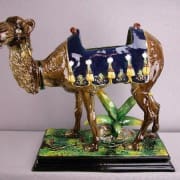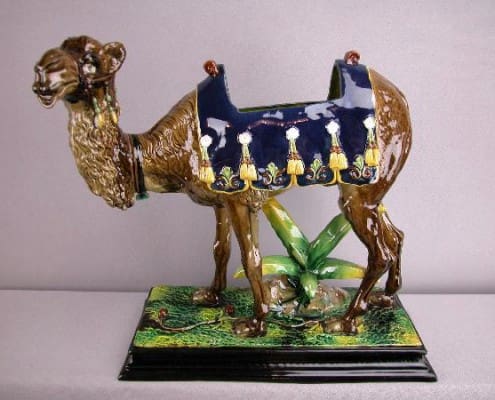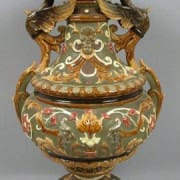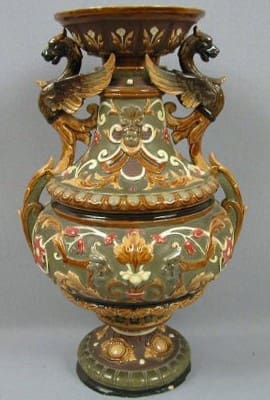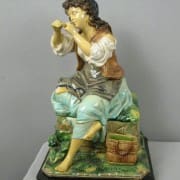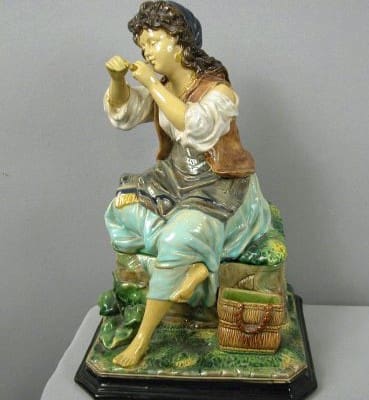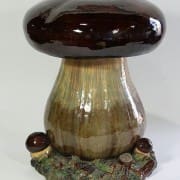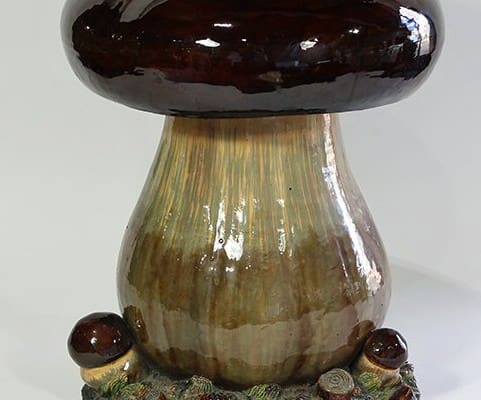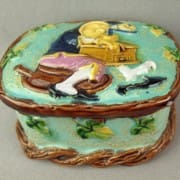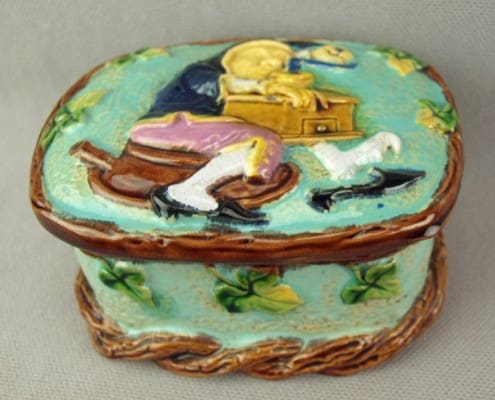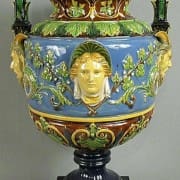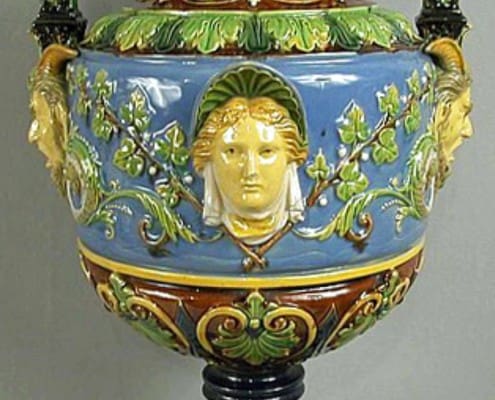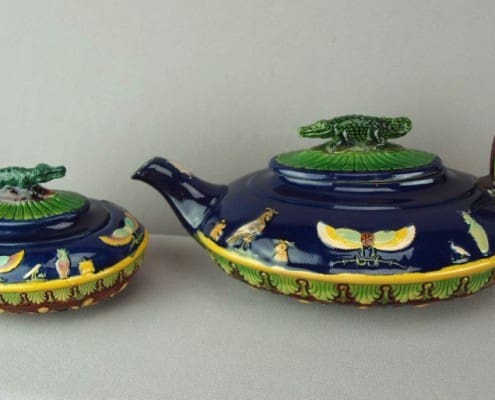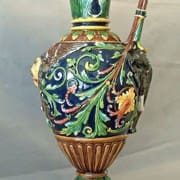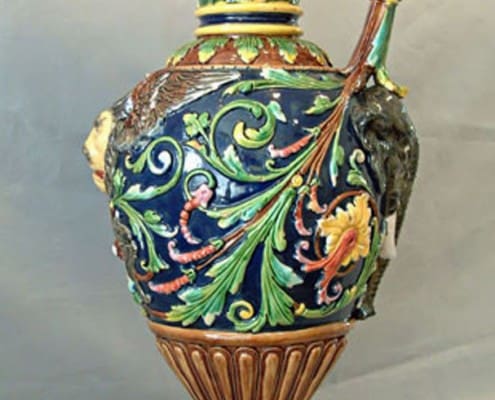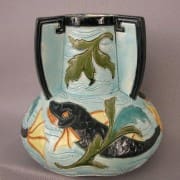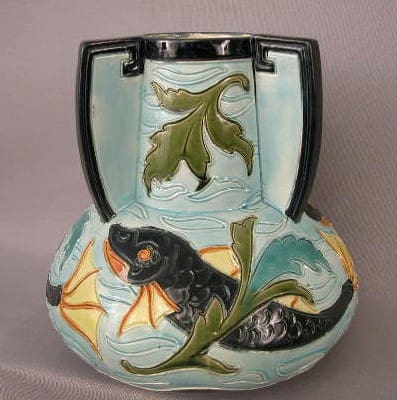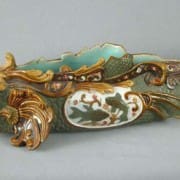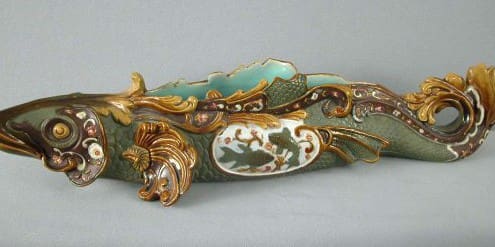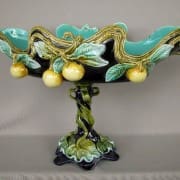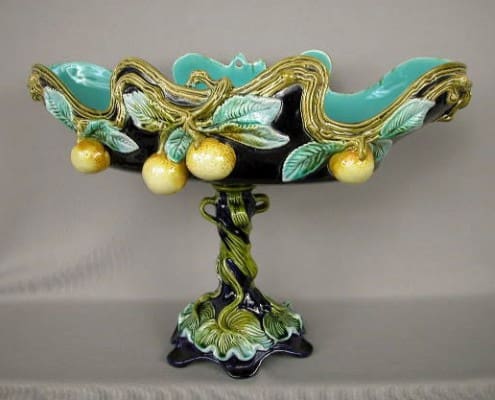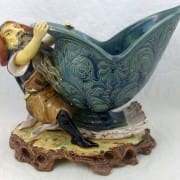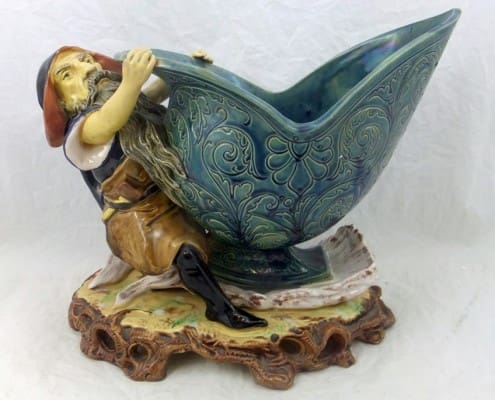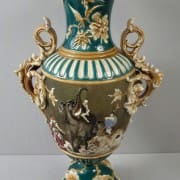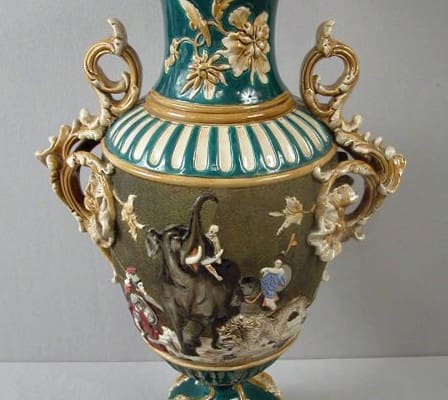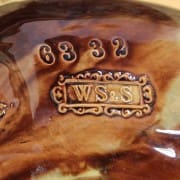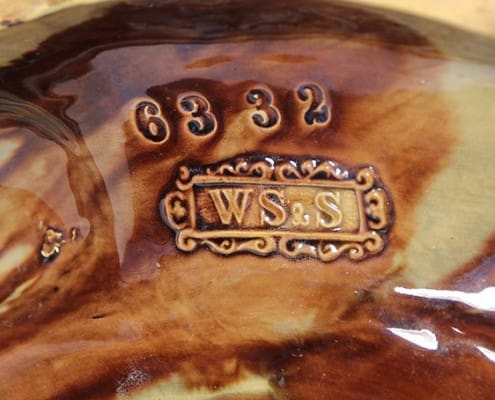Wilhelm Schiller
Wilhelm Schiller began production of porcelain and earthenware in Bodenbach, Bohemia in 1829, operating under the name of Schiller and Gerbing. In 1885, the firm was dissolved and renamed Wilhelm Schiller and Son and remained in operation until the onset of World War I. It is unknown whether the firm of Schiller and Gerbing produced majolica, but the firm of Wilhelm Schiller and Son is clearly the most prolific of the Bohemian manufacturers of majolica.
The color palette used by Bohemian majolica makers including Schiller is much more subdued than that of their Staffordshire counterparts. The background of many Schiller pieces is of a matte-finished taupe, light gray or turquoise with glazed surface features in various shades of brown and black. The interiors are usually glazed in turquoise. Much of the firm’s production reflects the transition from traditional Victorian majolica to the Art Deco style. The most common Schiller pieces are decorative vases, jardinieres, table centers and ewers. No examples of Schiller majolica plates, bowls or other functional table-wares are known.
Wilhelm Schiller and Sons majolica was marked with the letters ‘WS&S’ that was either impressed or contained within a raised cartouche.
Photo Credits:
Strawser Auctions
Live Auctioneers
Ebay images
Madelena Antiques
Antiques from Trilogy
Philppe Meunier & Juan-Alonso Defrocourt
Karmason Library

